Elevate your culinary repertoire with these exquisite Roasted Cauliflower Soufflés, a dish that masterfully combines delicate flavors with an irresistibly light and airy texture. Infused with the subtle sweetness of caramelized roasted cauliflower, the rich tang of goat cheese, the mellow notes of roasted garlic, and the fresh whisper of chives, these soufflés are more than just a meal—they are a vegetarian masterpiece. Ideal for a sophisticated brunch, an elegant lunch, or a special appetizer, they promise to captivate both the eye and the palate, leaving a lasting impression on your guests.
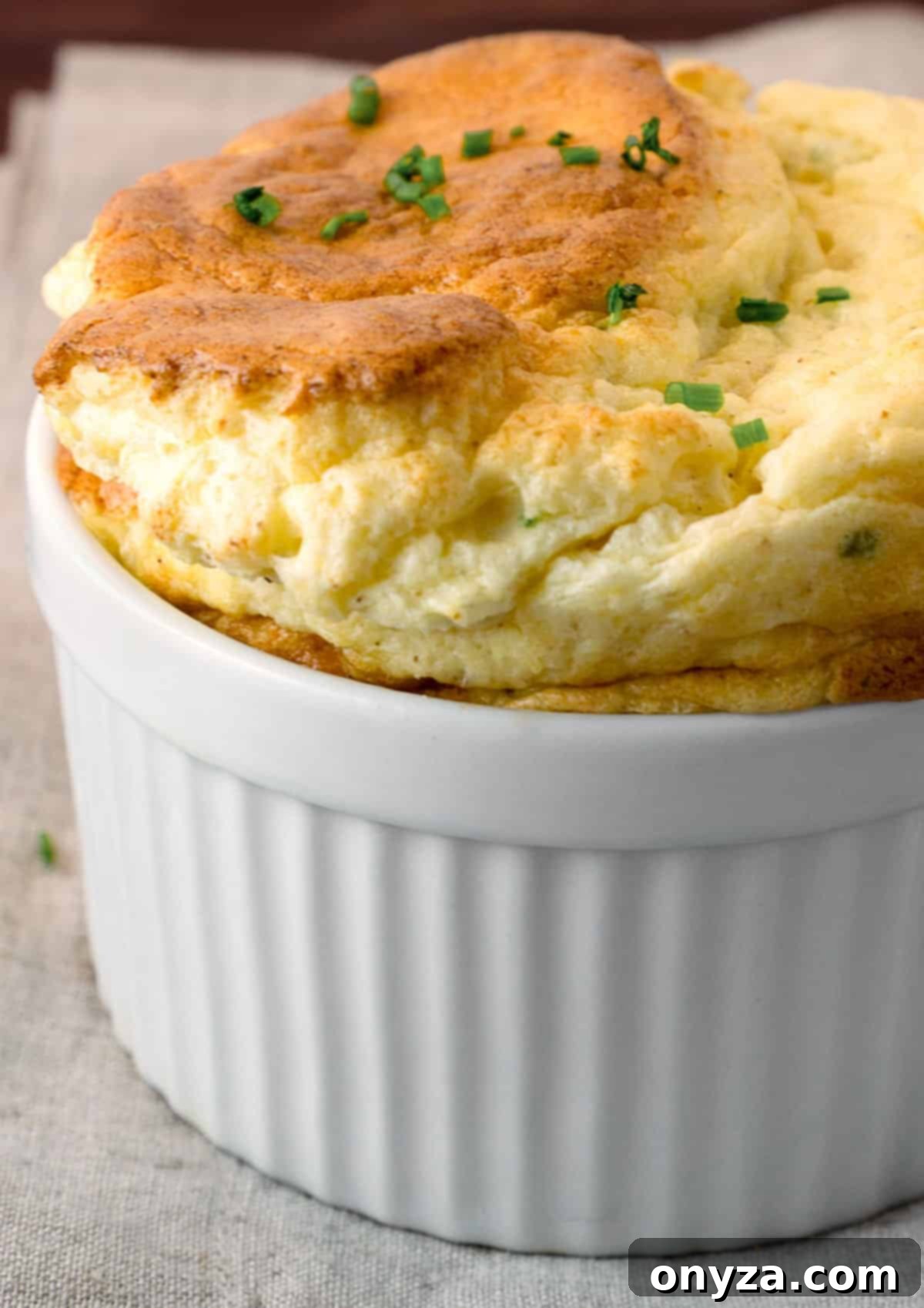
Roasted Cauliflower Soufflés with Goat Cheese: An Elegant Brunch & Lunch Delight
Are you searching for a dish that effortlessly blends elegance with comforting flavors? Look no further than these Roasted Cauliflower Soufflés. This recipe transforms humble cauliflower into a show-stopping creation, perfect for those moments when you want to impress without overwhelming your guests. Each bite delivers a harmonious blend of earthy, sweet, and tangy notes, encased in a cloud-like texture that truly melts in your mouth.
Why These Soufflés Will Become Your New Favorite
- The Ultimate Brunch Statement: Forget the same old eggs and pancakes. This Roasted Cauliflower and Goat Cheese Soufflé recipe elevates your brunch menu from ordinary to extraordinary. It’s a sophisticated, visually stunning dish that brings an elegant twist to traditional fare, making it particularly perfect for spring gatherings or any celebratory occasion where you want to serve something truly special. Its refined appearance and delightful flavor profile will have your guests talking long after the meal is over.
- A Symphony of Balanced Flavors: The magic of these soufflés lies in their perfectly balanced flavor profile. We start with cauliflower florets, roasted until deeply caramelized, which brings out a natural sweetness and nutty depth. This richness is beautifully complemented by the sweet, mellow notes of roasted garlic and the distinctive tangy, creamy, and slightly earthy essence of goat cheese. Fresh chives add a vibrant, mild oniony lift, ensuring that the cauliflower flavor is present but never overpowering. The result is a subtly complex yet delicately flavored dish, as light and airy in taste as it is in texture.
- Impressive Yet Achievable: The sight of a tall, perfectly puffed soufflé rising majestically from its ramekin is undeniably a showstopper. While soufflés have a reputation for being challenging, this recipe demystifies the process, breaking it down into clear, manageable steps. Even if this is your very first attempt at making a soufflé, you can follow these instructions with confidence, knowing that you’re on your way to creating a culinary masterpiece that will truly wow your guests. The effort is minimal compared to the magnificent outcome.
A Fan of Roasted Cauliflower? You might also adore my Creamy Curried Cauliflower Soup. It’s wonderfully cozy, satisfying, and packed with warm flavors.
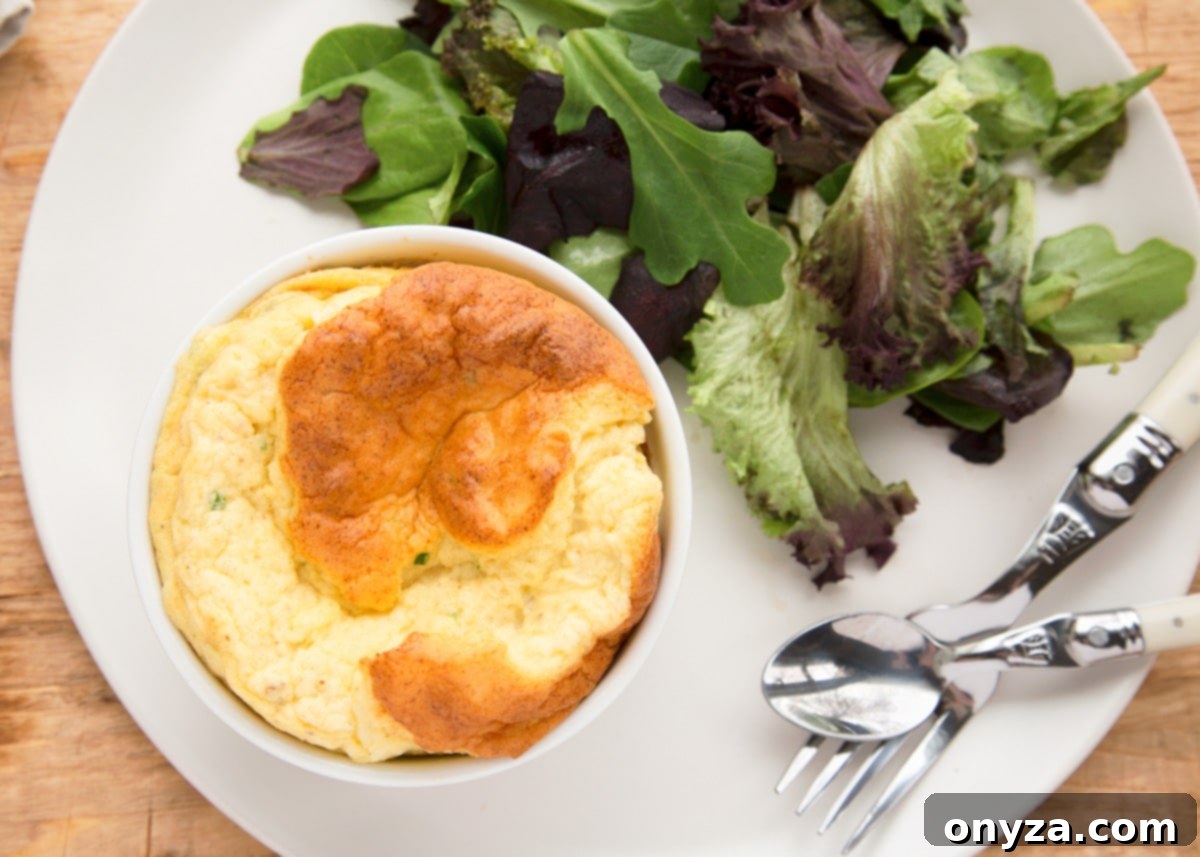
Understanding the Art of the Soufflé
At its heart, a classic soufflé is an iconic baked French egg dish, celebrated for its dramatic rise and ethereal, cloud-like texture. Soufflés can gracefully straddle the line between savory and sweet; our Roasted Cauliflower Soufflé is a savory rendition, while popular dessert variations include indulgent chocolate or fruit soufflés. The fundamental construction of any soufflé involves a rich, creamy base—often a béchamel sauce—into which egg yolks and flavorings are incorporated. This flavorful base is then gently folded with stiffly whipped egg whites, which are the secret to the soufflé’s signature puff and incredibly light, airy texture when baked until golden.
The hallmark of a truly exceptional soufflé is its delicate, melt-in-your-mouth quality. Fresh from the oven, it presents a stunning appearance, rising high above the rim of its baking dish, creating a culinary spectacle that never fails to impress. It’s a true showpiece that speaks volumes about the care and skill put into its preparation.
Despite their impressive nature, soufflés often carry a daunting reputation for being notoriously difficult to master, particularly when it comes to achieving that characteristic and stable “puff.” However, in reality, the process of making a soufflé is quite straightforward, though it does demand a certain level of precision and attention to detail. It’s more finicky than difficult, requiring careful handling rather than advanced culinary techniques.
From my experience, the secret to soufflé success lies in two key areas: first, embracing realistic expectations (understanding that soufflés will naturally begin to deflate shortly after leaving the oven, and that this is perfectly normal and part of their charm), and second, the meticulous handling of the eggs. The magic of truly delightful soufflés is almost entirely attributed to the proper preparation and gentle incorporation of the whipped egg whites. These fragile, aerated whites are what give the soufflé its structure, lift, and unbelievably airy texture, making them the most critical component of this elegant dish.
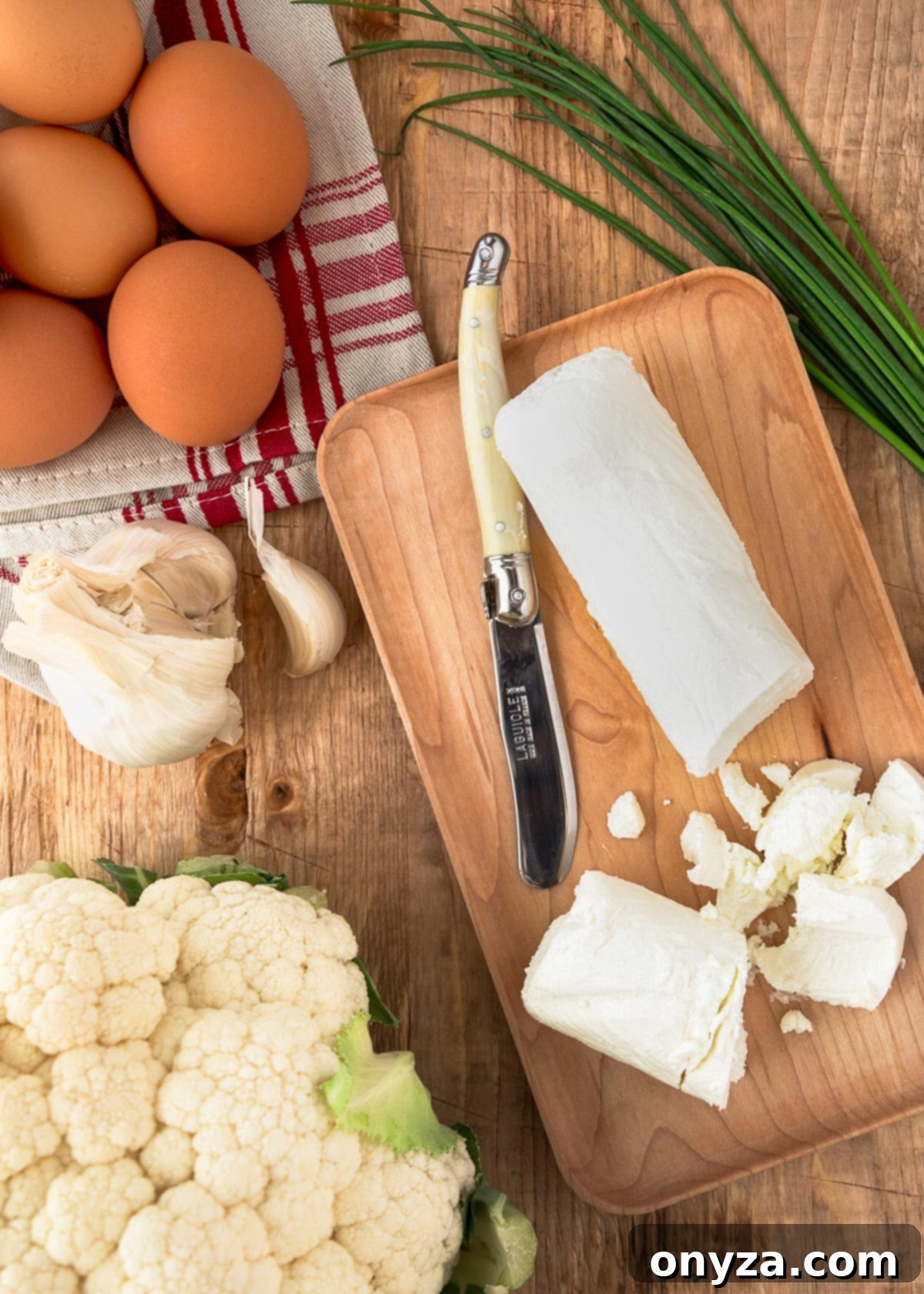
Essential Ingredients for Perfect Soufflés
Crafting these delectable soufflés relies on a handful of high-quality ingredients, each playing a crucial role in achieving the desired flavor and texture:
- Unsalted Butter: This kitchen staple is essential for two primary purposes. First, it forms the base of the roux, which in turn creates the velvety béchamel (white sauce) that gives our soufflé its rich foundation. Secondly, softened butter is vital for generously coating the insides of your ramekins, providing the soufflé mixture with the necessary grip to climb high as it bakes.
- Parmigiano Reggiano Cheese: Finely grated Parmigiano Reggiano is used to dust the buttered ramekins. This not only adds a delicious savory crust but also creates a slightly rough surface that helps the soufflé mixture cling to the sides of the dish, encouraging an impressive, vertical rise. Don’t substitute with pre-grated varieties for the best results.
- Cauliflower (Cut into Florets): The star of our dish! Roasting cauliflower transforms its flavor profile, coaxing out deep, nutty, and subtly sweet notes through caramelization. This process mellows its natural bitterness and adds incredible depth to the soufflé, making it far more complex than steamed cauliflower.
- Garlic: Whole, unpeeled garlic cloves are roasted alongside the cauliflower. This gentle cooking method renders the garlic incredibly soft, creamy, and sweet, eliminating the pungent harshness often associated with raw garlic. The roasted garlic contributes a beautiful, mellow aroma and flavor that perfectly complements the other ingredients.
- Olive Oil: Used for coating the cauliflower and garlic before roasting. A regular olive oil, such as Filippo Berio (affiliate link), is recommended over extra-virgin for this purpose. Its slightly higher smoke point and milder flavor ensure that it won’t burn or overpower the delicate flavors during high-heat roasting.
- Goat Cheese: This ingredient is crucial for introducing a wonderfully creamy texture and a distinctive earthy, tangy, and subtly buttery flavor to the soufflé mixture. It pairs beautifully with the roasted cauliflower and garlic. You’ll need half of a 10-ounce log; if you have leftovers, consider using them in my Smoked Salmon Frittata or Bacon and Goat Cheese Popovers.
- All-Purpose Flour: This is the essential thickening agent for your béchamel sauce. When cooked with butter to form a roux, it sets the stage for a smooth, stable, and creamy sauce, which is critical for the soufflé’s structure.
- Whole Milk: Incorporating whole milk ensures the béchamel is rich, luxurious, and creamy. For optimal flavor and texture, it is strongly advised against substituting with reduced-fat or fat-free milk, as this will significantly impact the final quality of your soufflé.
- Whole Eggs (Separated): Eggs are fundamental to soufflé success. The yolks are whisked into the béchamel, enriching the soufflé base with flavor and emulsification. The separated egg whites, once whipped to stiff peaks, are responsible for adding air and volume, creating the dish’s signature spectacular puff and light, airy texture.
- Grated Nutmeg: A classic and indispensable addition to béchamel sauce. A small amount of freshly grated nutmeg adds a hint of warm spice and a layer of sophisticated complexity that perfectly enhances the savory flavors of the soufflé without overpowering them.
- Fresh Chives: These delicate herbs contribute a mild, fresh onion flavor that beautifully brightens the deeper, more savory notes of the roasted cauliflower and garlic. They add a fresh, herbaceous finish and a pop of color.
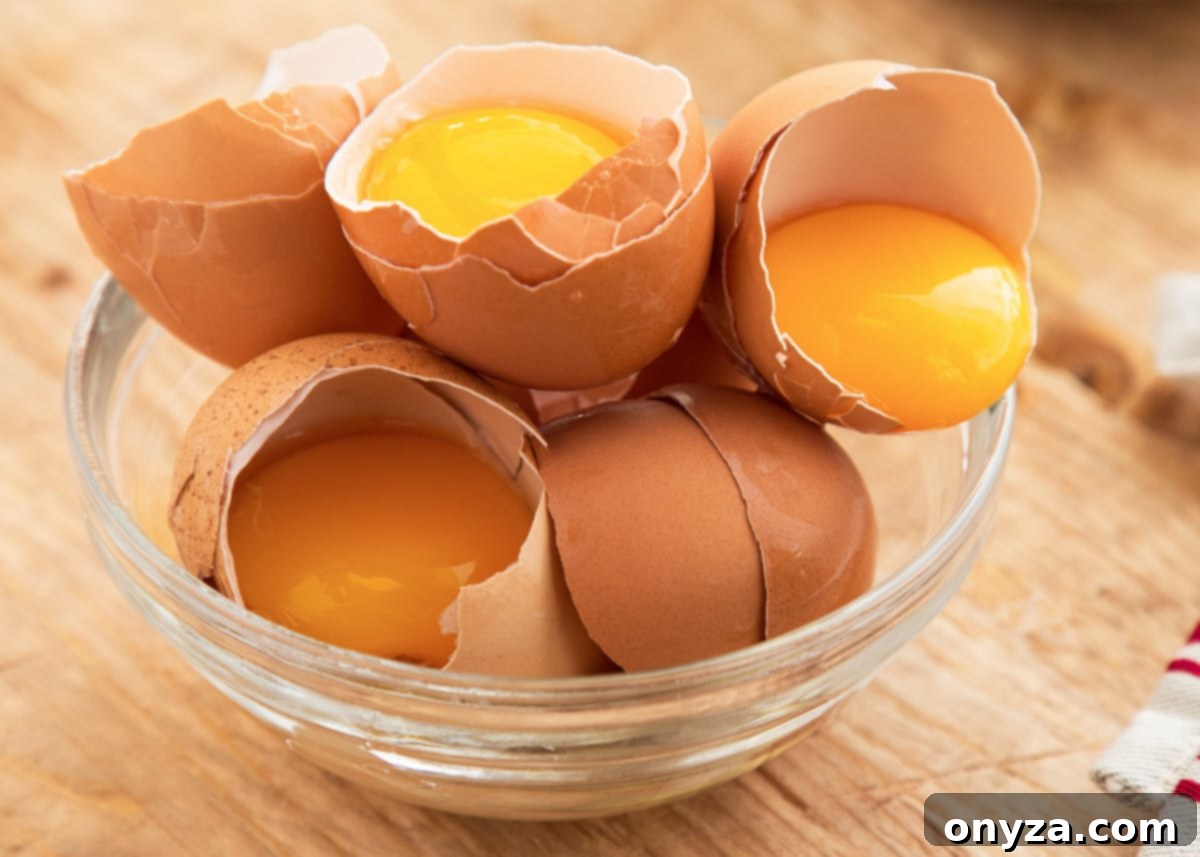
Essential Tools for Soufflé Success
To successfully prepare these magnificent Roasted Cauliflower Soufflés, having the right tools on hand will make the process much smoother and ensure the best results. Here’s what you’ll need:
- Ramekins: You will require six 10-ounce oven-safe ramekins (affiliate link). These individual baking dishes are specifically designed for soufflés, allowing them to rise uniformly. I personally love the classic, elegant appearance of fluted white porcelain ramekins; they add a touch of timeless sophistication to your table presentation.
- Parchment Paper and Cooking Twine: These two items are indispensable for creating the “collars” that wrap around your ramekins. Parchment paper (affiliate link) provides a smooth, non-stick surface that the soufflé can climb higher than the ramekin rim, allowing for a truly impressive puff. Cooking twine (affiliate link) is then used to securely fasten these collars in place around the dishes.
- Food Processor or Blender: A powerful food processor or blender is essential for creating the silky-smooth cauliflower and goat cheese puree that forms a key component of your soufflé base. This ensures a consistent texture throughout the mixture.
- Stand Mixer (or Hand Mixer): Whipping egg whites to stiff peaks is a critical step, and a stand mixer equipped with a whisk attachment (or a reliable hand mixer) makes this process incredibly easy and efficient. While it’s certainly possible to whip egg whites by hand with a whisk, a mixer saves time and arm strength, ensuring consistent results.
- Rimmed Sheet Pan: A sturdy rimmed sheet pan (affiliate link) is necessary for roasting your cauliflower and garlic evenly. It also provides a stable base for chilling and baking your ramekins.
- Saucepan and Whisk: For preparing the béchamel sauce, a medium-sized saucepan and a good quality whisk are fundamental to achieve a smooth, lump-free roux and creamy sauce.
- Rubber Spatula: This tool is indispensable for gently folding the whipped egg whites into the soufflé base without deflating them, a crucial step for maintaining the soufflé’s airy texture.

Crafting Your Roasted Cauliflower Soufflés: A Step-by-Step Guide
Creating these elegant soufflés involves a series of sequential steps, each contributing to the final masterpiece. While the process may seem layered, I’ve broken it down into manageable parts. Remember, detailed instructions are provided in the recipe section below, but this overview will guide you through the journey.
Step 1: Roast the Cauliflower and Garlic for Flavor Foundation
Begin your soufflé adventure by preheating your oven to a robust 400°F (200°C). This high heat is crucial for achieving that desirable caramelization. Spread your cauliflower florets and whole, unpeeled garlic cloves evenly across a rimmed sheet pan (affiliate link). For effortless cleanup, I highly recommend lining your pan with foil. Drizzle the vegetables generously with olive oil, then season them with a few pinches of kosher salt and freshly ground black pepper. Toss everything to ensure even coating.
Roast for approximately 25-30 minutes, or until the cauliflower florets are tender with beautifully browned, caramelized edges, and the garlic cloves are soft and fragrant. Halfway through the roasting time, give the vegetables a gentle flip to ensure even browning on all sides. Once perfectly roasted, remove the pan from the oven and let the cauliflower and garlic cool slightly. Then, carefully squeeze the softened garlic cloves from their skins; discard the peels. Keep your oven on, as it will be needed for baking the soufflés shortly.

Step 2: Prepare Your Ramekins for Maximum Lift
While the cauliflower and garlic are roasting, dedicate your attention to preparing the ramekins. Using softened unsalted butter, thoroughly coat the entire interior surface of six 10-ounce oven-safe ramekins. Be generous with the butter; it helps the soufflé rise smoothly. Next, swirl about a tablespoon of grated Parmigiano Reggiano cheese into each buttered ramekin, rotating it to ensure the cheese adheres to all surfaces. Tap out any excess cheese. Place these prepared ramekins on a rimmed baking sheet and chill them in the refrigerator while you proceed with the soufflé batter preparation. Chilling prevents the butter from melting too quickly in the oven, giving the soufflé a better chance to climb.
Now, let’s prepare the parchment collars. These collars are essential for allowing your soufflés to rise impressively high without overflowing. Cut parchment paper into rectangles that measure approximately 15 inches wide by 6 inches long. For added stability, fold each rectangle in half lengthwise, resulting in collars that are about 15 inches by 3 inches. Lightly brush one side of each folded collar with melted butter or spray it with cooking spray. It’s crucial not to attach these collars to the ramekins just yet; simply have them prepped and ready for when the soufflé mixture is complete and poured into the dishes.
Step 3: Construct the Flavorful Soufflé Base
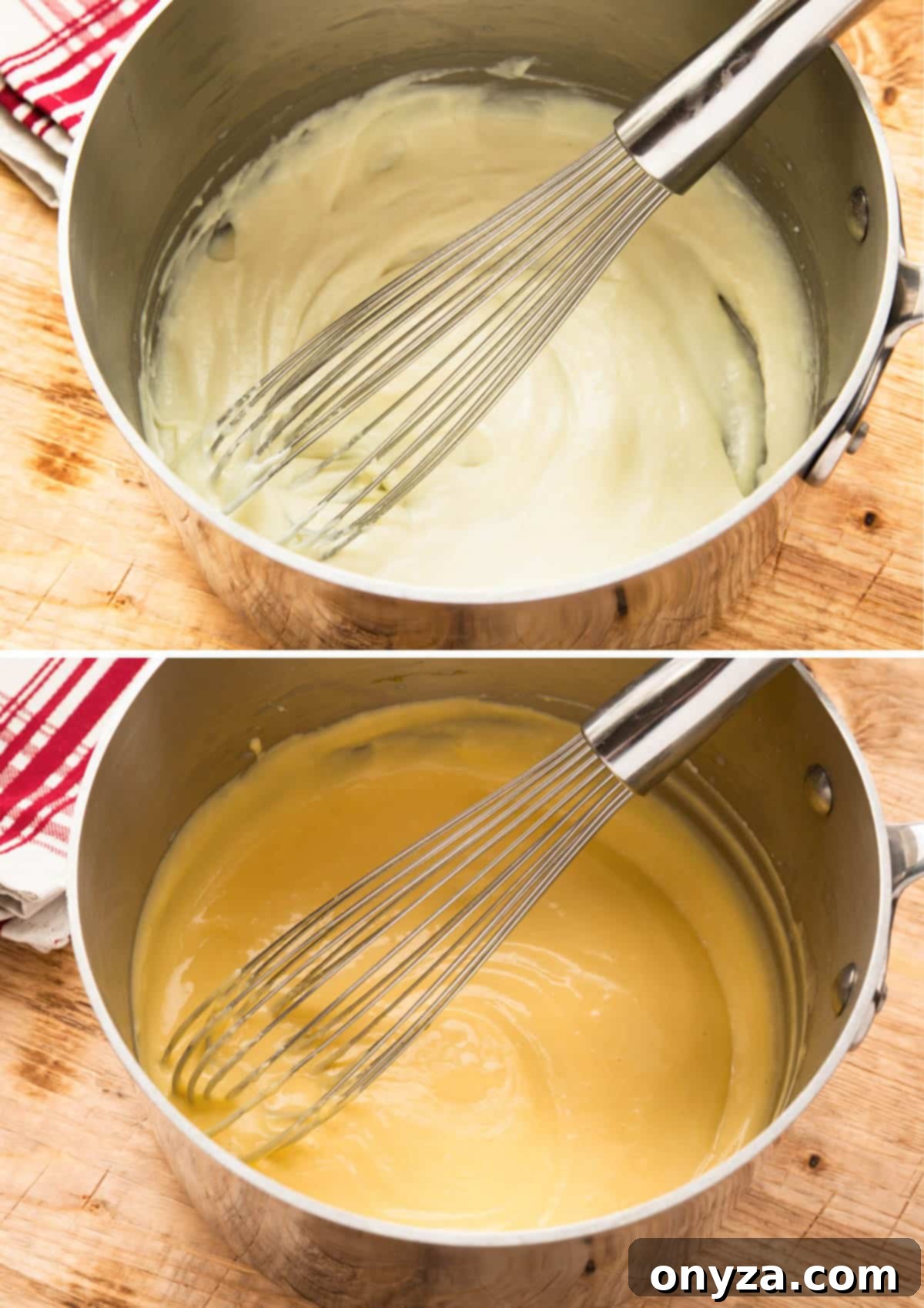
The heart of these Roasted Cauliflower Soufflés is the rich and creamy béchamel sauce. In a medium saucepan, melt the unsalted butter over medium-low heat. Once melted, whisk in the all-purpose flour and cook for just a minute or two, stirring constantly. This step, known as making a roux, cooks out the raw flour taste without letting it brown. Gradually and slowly whisk in the whole milk, continuing to stir as the sauce thickens. Cook for approximately 5 minutes, ensuring the sauce is beautifully smooth, thick, and glossy. Remove from heat and let it cool for a few minutes to prevent scrambling the eggs.
Once slightly cooled, whisk in the egg yolks, one at a time, until they are fully incorporated and the mixture is smooth and evenly colored. Place a piece of plastic wrap directly onto the surface of the béchamel-egg yolk mixture to prevent a skin from forming, and set it aside.
Now, it’s time to incorporate the star flavors. In a blender or food processor, combine the cooled roasted cauliflower and garlic with the goat cheese and seasonings (kosher salt, freshly ground black pepper, and a touch of grated nutmeg). Process until you achieve a smooth, velvety puree, scraping down the sides of the bowl as needed to ensure everything is thoroughly blended. Whisk this flavorful cauliflower puree and the snipped fresh chives into your béchamel-egg yolk mixture until everything is harmoniously combined. This is a crucial moment for flavor development! Before moving to the next step, ensure this entire base mixture has cooled completely to room temperature. A warm base can deflate your delicate egg whites.
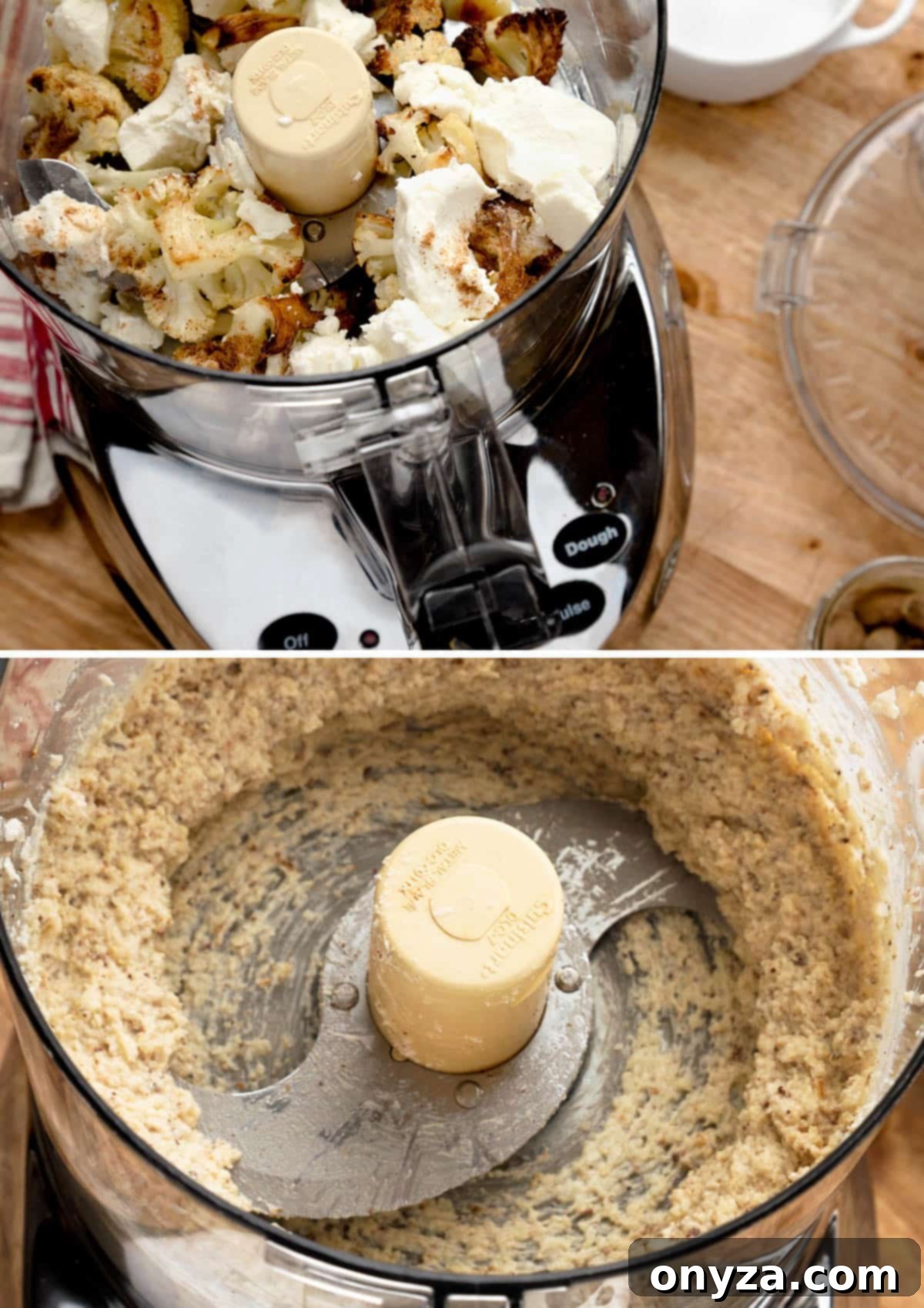
Step 4: Master the Art of Whipped Egg Whites
This is arguably the most critical step for achieving the characteristic soufflé puff. In a stand mixer fitted with the whisk attachment, or using a clean bowl and a hand mixer, begin whipping your egg whites. Once they become foamy, add a quarter teaspoon of cream of tartar. The cream of tartar acts as a stabilizer, helping the egg whites hold their volume. Continue whipping until the whites are voluminous and form stiff peaks. This means when you lift the whisk, the peaks should stand upright and hold their shape firmly, but still appear moist and billowy. Be careful not to overwhip them until they are dry and crumbly, as this makes them difficult to fold.
Expert Tips for Perfectly Whipped Egg Whites:
- Start Chilled, Finish Warm: For the cleanest separation, separate your egg whites from the yolks while the eggs are still cold. However, for the quickest and easiest route to stiff peaks, allow your separated egg whites to come to room temperature before whipping. Room temperature whites whip up faster and achieve more volume.
- Impeccable Cleanliness is Key: Ensure that both your whipping bowl and beaters are immaculately clean and completely dry. Any trace of oil, grease, or even a tiny drop of egg yolk (which contains fat) will act as a deflating agent, preventing the egg whites from whipping up properly. Use glass or metal bowls, as plastic can retain greasy residues.
- Avoid Over-Whipping: Keep a very close eye on your egg whites as you whip them. The ideal consistency is stiff peaks that are still moist and glossy, not dry or granular. Over-whipping can lead to dry, brittle whites that are difficult to fold into the base without losing all their precious air, which will ultimately stunt your soufflé’s majestic rise during baking.
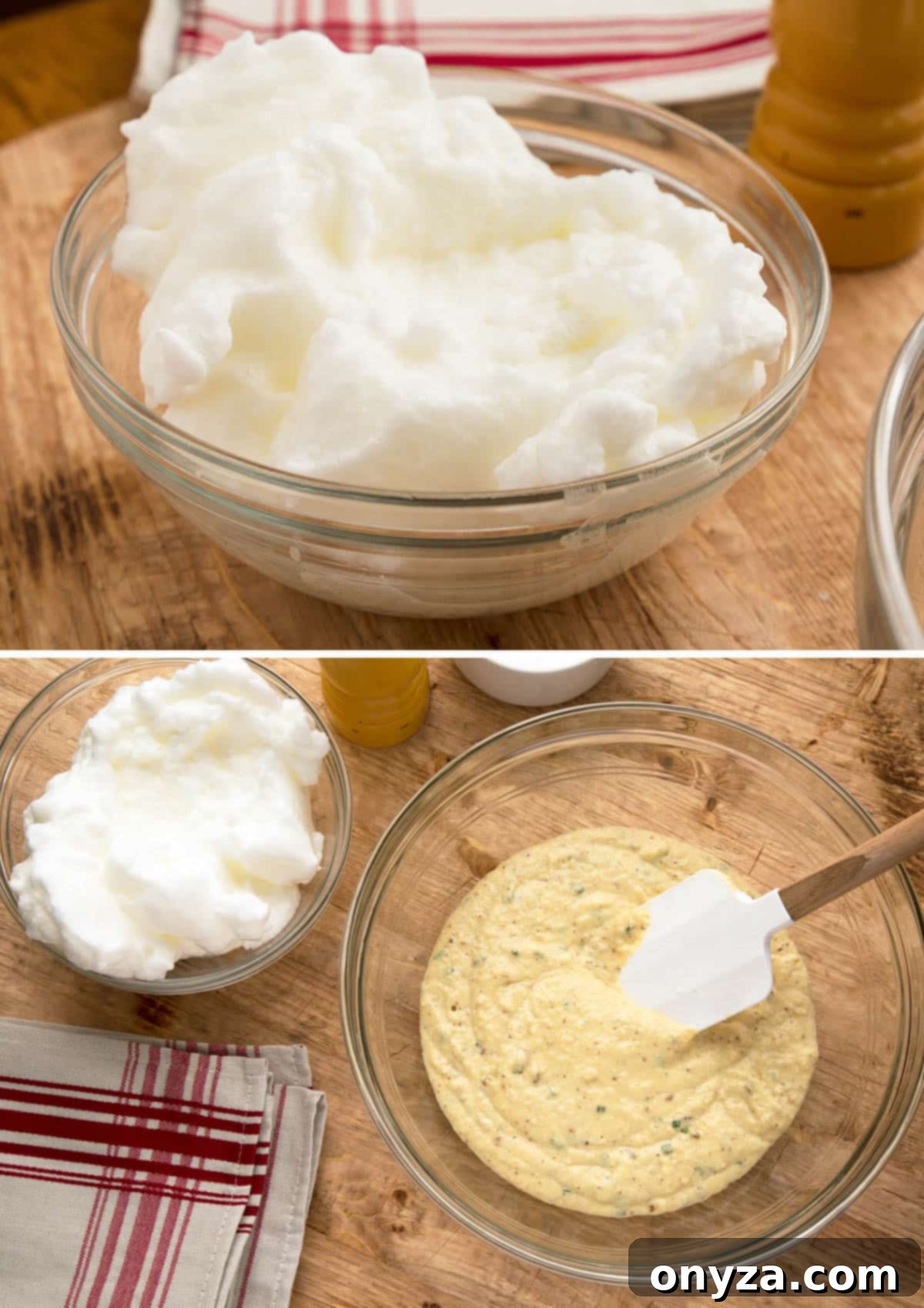
Step 5: Bringing It All Together and Baking to Perfection
The final assembly stage requires a delicate touch to preserve the airiness of your egg whites. Since your cauliflower base is relatively heavy, I recommend first whisking about one-third of the whipped egg whites into the base mixture. This “sacrificial” portion helps to lighten the base, making it easier to incorporate the remaining, more delicate whites without deflating them. Once the base is lightened, gently and slowly fold in the remaining whipped egg whites in two to three additions using a large rubber spatula. Use a circular motion, cutting down through the center and sweeping up the side of the bowl, rotating as you go. The key is to be patient and gentle; don’t rush this step. You’ll be rewarded with pillowy, beautifully risen soufflés in the end!
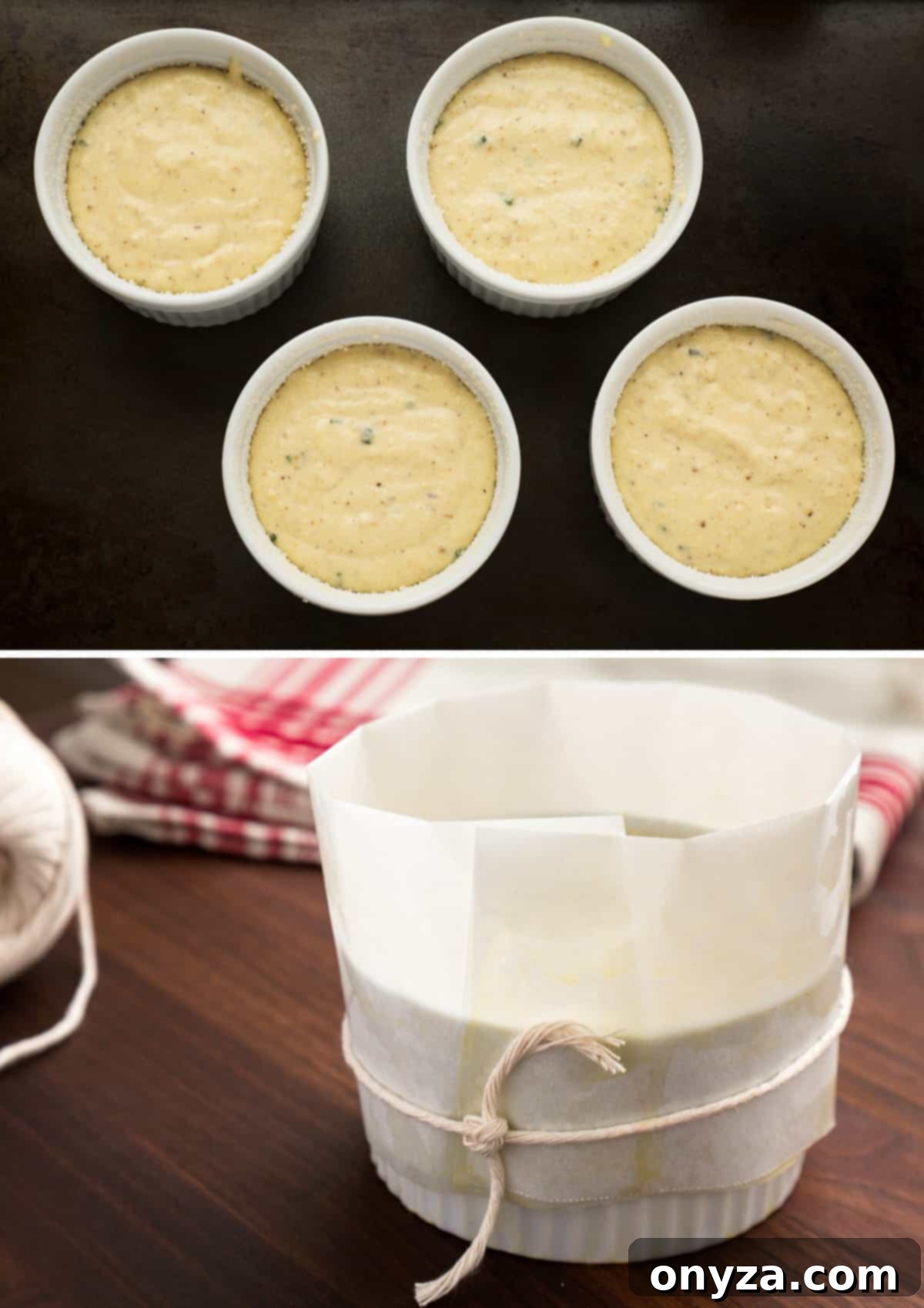
Once your batter is perfectly combined, carefully divide the mixture evenly among your six chilled, prepared ramekins. Now, take your greased parchment collars and secure them around the outsides of the filled dishes using kitchen twine or small paper clips. These collars will be your soufflé’s best friend, guiding it to an impressive height. Carefully place the ramekins (still on their chilled baking sheet) into your preheated oven.
Immediately after placing the soufflés in the oven, reduce the oven temperature to 375°F (190°C). Bake for 25-30 minutes, or until the soufflés have risen beautifully, are puffed and golden brown on top, and a wooden skewer or thin knife inserted into the center comes out clean or with just a slight crumb. You’ll see exactly why those parchment collars were so essential!
The moment of truth! As soon as the soufflés emerge from the oven, gently but swiftly remove and discard the parchment collars. They’ve done their job. For a final flourish and a touch of color, sprinkle the tops with a scattering of fresh chopped chives. Serve these magnificent creations immediately, straight from the oven to the table.
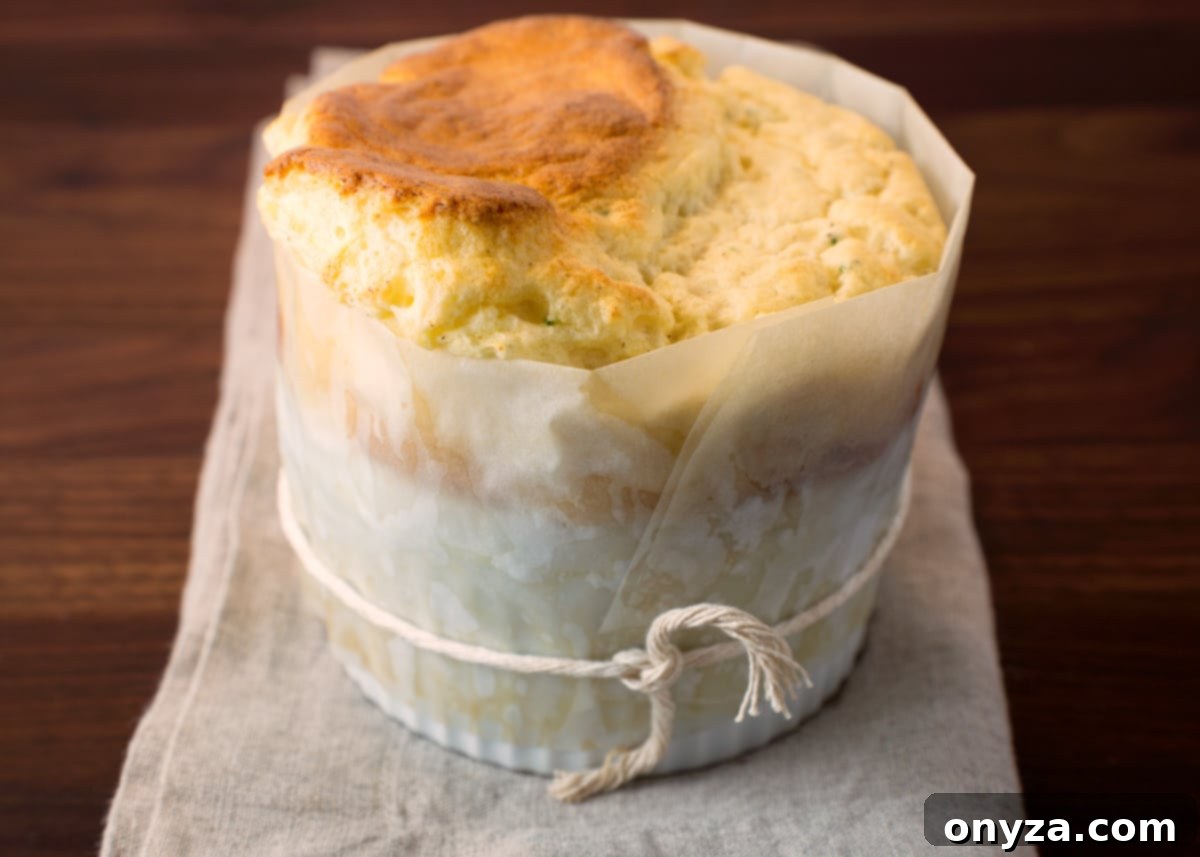
Presentation and Serving: The Final Flourish
These elegant Roasted Cauliflower Soufflés are incredibly versatile and perfectly suited for a variety of dining occasions. They make a superb appetizer to kick off a refined dinner party, a delightful main course for a light vegetarian lunch, or the show-stopping centerpiece of a celebratory brunch. For those observing Meatless Fridays during Lent, they offer a flavorful and satisfying option that doesn’t compromise on taste or elegance.
When serving them as a light meal, I particularly enjoy pairing these soufflés with crusty bread—perfect for soaking up any creamy goodness—and a simple, lightly dressed spring green salad. A vibrant mix of mesclun, tender watercress, and peppery baby arugula dressed with a bright vinaigrette provides a refreshing counterpoint to the soufflé’s richness. They are also absolutely delicious served alongside this effortless Arugula and Fennel Salad, where the crisp texture and anise notes complement the soft soufflé beautifully.
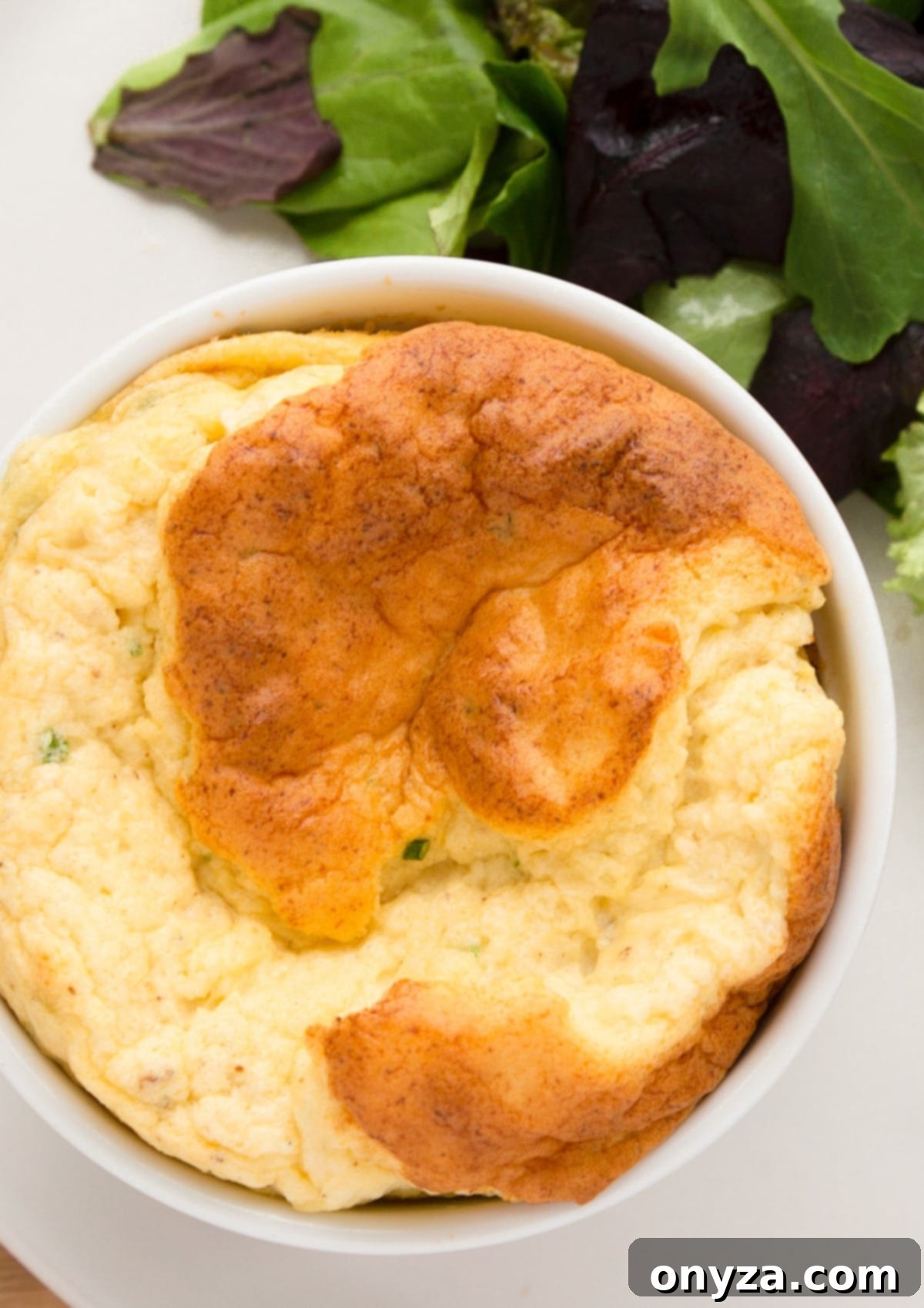
It’s important to remember, as I’ve mentioned, that deflation is an inherent characteristic of soufflés. Therefore, for the absolute best texture and appearance, these soufflés must be served as soon as possible directly out of the oven. This isn’t the kind of dish that can patiently wait on the back burner for 15 minutes while other components of your meal finish cooking. To truly capitalize on that magnificent “puff” you’ve worked so diligently to achieve, the soufflé needs to travel almost directly from the oven to the table, allowing your guests to marvel at its height before it gracefully begins to settle.
But rest assured, even if your soufflé does begin to deflate a little—which is perfectly normal—it will still taste absolutely incredible. The flavors remain vibrant and delicious; it simply won’t have that dramatic, show-stopping appearance, and its texture will become a touch denser. Personally, I would never turn down a fresh soufflé, whether it’s majestically puffed or has settled into a more modest, yet equally delicious, state!
Frequently Asked Questions About Soufflés
New to soufflé making? Here are some common questions to help you master this elegant dish:
- Can I prepare soufflé batter ahead of time? The base (cauliflower-béchamel mixture) can be made a day in advance and stored covered in the refrigerator. However, the egg whites must be whipped and folded into the base just before baking. Soufflés are best baked immediately after the egg whites are incorporated to ensure maximum puff.
- What if my soufflé doesn’t rise? There are a few common culprits:
- Greasy bowl/beaters: Any fat will prevent egg whites from whipping properly. Ensure all equipment is spotless.
- Egg yolk in whites: Even a tiny bit of yolk can ruin the whites.
- Over- or under-whipped whites: Whites should be stiff but still moist.
- Over-folding: Being too aggressive when folding the whites into the base will deflate them.
- Oven temperature issues: Make sure your oven is accurately preheated and avoid opening the oven door during the first 20 minutes of baking.
- Can I substitute goat cheese with other cheeses? While goat cheese provides a unique tang and creaminess, you could experiment with other soft, tangy cheeses like cream cheese or a mild feta, keeping in mind the flavor profile will change. For a less tangy option, a mild ricotta or even cream cheese could work, but you’ll lose some of the distinctive character.
- How do I store leftover soufflé? Soufflés are truly best enjoyed immediately. Leftovers will deflate and become denser. You can store them in an airtight container in the refrigerator for a day, but reheating will further alter the texture. It’s best to enjoy them fresh!
More Delicious Recipes Featuring Spring Produce
Embrace the freshness of the season with these delightful recipes:
- Roasted Radishes with Tarragon Vinaigrette: A surprisingly delicious way to enjoy radishes, transforming their peppery bite.
- Roasted Cabbage Wedges: Simple yet incredibly flavorful, showcasing cabbage’s sweet side when roasted.
- Braised Leeks with Dill Sauce: Tender, sweet leeks cooked to perfection, complemented by a bright, herbaceous sauce.
CRAVING MORE CULINARY INSPIRATION? Subscribe to my newsletter for weekly recipe updates and kitchen tips. Join me on Facebook, Pinterest, and Instagram to stay connected with the latest delicious creations!
Goat Cheese and Roasted Cauliflower Soufflés Recipe
Make your spring brunch menu stand out with these elegant Roasted Cauliflower Soufflés, featuring tangy goat cheese, sweet roasted garlic, and fresh chives. This recipe brings a sophisticated touch to any table, offering a light texture and a beautiful rise that’s sure to impress your guests.
Prep Time: 45 minutes
Cook Time: 1 hour 15 minutes
Total Time: 2 hours
Servings: 6 servings
Rating: 5 from 1 vote
Ingredients
- Unsalted butter, softened, for greasing ramekins
- 6 tablespoons Parmigiano Reggiano, grated
- 8 ounces cauliflower florets
- 3 cloves garlic, unpeeled
- 1 tablespoon olive oil
- 5 ounces goat cheese
- 1 1/2 recipes thick Béchamel Sauce (approx. 4 1/2 tablespoons flour, 4 1/2 tablespoons butter, 1 1/2 cups milk)
- 5 egg yolks
- 8 egg whites
- ¼ teaspoon cream of tartar
- ¼ teaspoon grated nutmeg
- 1 tablespoon snipped fresh chives, plus extra for garnish
- Kosher salt, to taste
- Freshly-ground black pepper, to taste
Instructions
Prepare ramekins and soufflé collars:
- Butter six, 10-ounce ramekins generously and coat each with about 1 tablespoon grated Parmigiano Reggiano, tapping out any excess. Place ramekins on a baking sheet and chill until ready to use.
- Cut parchment paper into rectangles approximately 15 inches wide by 6 inches long. Fold them in half lengthwise for stability (creating collars of 15 inches by 3 inches). Lightly grease one side of each collar with melted butter or cooking spray. Set aside; do not secure onto ramekins until ready to bake.
Roast the cauliflower and garlic:
- Preheat oven to 400 degrees F (200°C) with the oven rack in the middle position.
- Cut a small slice off each end of the garlic cloves, exposing the interior without removing the peels.
- Toss cauliflower florets, garlic, and olive oil on a baking sheet. Sprinkle with a few pinches of kosher salt and freshly-ground black pepper.
- Roast for 25-30 minutes, turning cauliflower florets halfway through for even browning, until tender and caramelized. Remove from oven and set aside to cool slightly.
- Squeeze the softened garlic cloves from their peels and discard the skins.
Make the soufflé base:
- Prepare the Béchamel Sauce according to the recipe, ensuring it is thick and smooth. Let it cool for 2-3 minutes.
- Whisk in the egg yolks, one at a time, until fully combined and the mixture is smooth. Place a piece of plastic wrap directly onto the surface of the sauce to prevent a skin from forming, and set aside.
- In a food processor, combine the roasted cauliflower, roasted garlic, goat cheese, ¼ teaspoon ground nutmeg, ¾ teaspoon kosher salt, and a few grinds of black pepper. Process until you achieve a very smooth puree, scraping the bowl as needed to ensure all cauliflower is incorporated.
- Whisk the cauliflower puree and 1 tablespoon chopped chives into the béchamel-egg yolk sauce until completely combined. If the mixture is still warm, let it stand until it reaches room temperature before proceeding.
Assemble and bake the soufflés:
- In a stand mixer fitted with the whisk attachment (or using a clean bowl with a hand mixer), whip the egg whites until foamy. Add the ¼ teaspoon cream of tartar and continue whipping until the whites are voluminous and form stiff peaks, but are not dry.
- Whisk about 1 cup of the whipped egg whites into the cauliflower mixture to lighten the base.
- Using a rubber spatula, gently fold in the remaining egg whites in 2-3 additions, using a circular motion and cutting down through the center, until no streaks remain. Be careful not to deflate the whites.
- Divide the soufflé mixture evenly between the six prepared and chilled ramekins.
- Take your greased parchment collars and secure them around the exterior of the ramekins with kitchen twine or pins, ensuring they extend 1 1/2 to 2 inches above the rim.
- Place the ramekins (on their chilled baking sheet) into the preheated oven. Immediately reduce the oven temperature to 375 degrees F (190°C).
- Bake for 25-30 minutes, or until the soufflés are beautifully puffed, light golden brown on top, and a wooden skewer or thin knife inserted into the center comes out clean or just slightly moist.
- Remove the soufflés from the oven. Gently but swiftly remove and discard the parchment collars (some slight deflation may occur during removal, which is normal).
- Sprinkle the tops with extra chopped chives for garnish, if desired, and serve immediately.
Notes
Parchment collars are crucial for helping the soufflés rise high without collapsing or overflowing in the oven. For the 10-ounce ramekins pictured, I cut 15-inch wide pieces of parchment to lengths of 6-inches, and folded them in half lengthwise for stability (creating collars of 15-inches by 3-inches). I find cooking spray to be the most convenient and effective way to grease the collars, but brushing with melted butter also works well. It’s always best to have the collars cut and prepped in advance of portioning the soufflé batter.
Nutrition Estimate
Serving: 1 soufflé | Calories: 295kcal | Carbohydrates: 5g | Protein: 15g | Fat: 22g | Saturated Fat: 11g | Cholesterol: 217mg | Sodium: 669mg | Potassium: 206mg | Sugar: 2g | Vitamin A: 520IU | Vitamin C: 19mg | Calcium: 125mg | Iron: 1.1mg
Nutrition information is automatically calculated and should only be used as an approximation.
Please note that our recipes have been developed using the US Customary measurement system and have not been tested for high altitude/elevation cooking and baking.
Like this? Rate and comment below!
